 I got up at 5 a.m. this morning and went to the gym. Crazy to some, but I know that is the optimal time for ME to exercise. If I plan to go after work, I either end up not going because I’m too tired or had a better offer; or I go and dread being there the entire time and don’t get a good workout in. Some people would rather eat brussel sprouts than get up at 5 a.m. to exercise – and that’s okay – but for me it’s part of what makes my day feel balanced. I have more energy, I tend to eat healthier, and it does my body good.
I got up at 5 a.m. this morning and went to the gym. Crazy to some, but I know that is the optimal time for ME to exercise. If I plan to go after work, I either end up not going because I’m too tired or had a better offer; or I go and dread being there the entire time and don’t get a good workout in. Some people would rather eat brussel sprouts than get up at 5 a.m. to exercise – and that’s okay – but for me it’s part of what makes my day feel balanced. I have more energy, I tend to eat healthier, and it does my body good.
Blogging is kind of like that. If you’re taking the time to write you want to make sure it’s working for you. Just like well-balanced days are good for a healthy lifestyle, well-balanced articles are your key to a healthy blog.
If an apple a day keeps the doctor away, could a blog a day keep Google at bay?
Yep. Think of your blog as a plate. We’ll use the plate that has replaced the classic food pyramid. It’s recommended that you eat a certain amount of servings each day from each category. Each blog you write should include “servings” as well:
- Keywords (Vegetables)
- Technical components (Grains)
- Readability (Protein)
- Images and media (Fruit)
- Calls-to-action (Dairy)
Just like you would ideally like to eat a healthy diet every day, ideally you should be blogging every day. But I know that’s not realistic. So, keep Google happy and flex your blogging muscles to start building up your blog by writing a minimum of 2 blogs a week that contain all of the following components.
Keywords
Vegetables make up the largest portion of the plate. That’s because they are the most important to your health. Keywords are one of the most important elements of your blogs because they tell Google what your blog is about. If you use the same keywords in numerous blogs as part of your internet marketing strategy, then you will start to show up when people search for relating topics. For example, if your keyword phrase is “seasonal healthy vegetarian recipes” then if you use that phrase in multiple blogs focusing on different angles, you will start ranking. Learn more about keywords here.
Technical Components
There are many technical pieces and parts of a blog post sprinkled throughout that help it get found by Google, which helps your business rank higher, which helps people find you. They are the grains of your diet. You wouldn’t necessarily die without grains, and your blog won’t be useless without these technical components, but they are still extremely important if you want to be healthy. These technical components include:
- Blog length is 500-800 words
- Keyword is in the title, first 120 words of the blog, last paragraph, and keyword frequency throughout the blog is less than 1%
- Blog title is less than 70 characters and includes the keyword
- 1-2 links to your website pages or other blogs you’ve written (these are called internal links)
- 1-2 links to credible websites outside of yours (these our called external links)
- Blog has a meta description (the short paragraph that shows up under each search result listed on Google)
- Images and Media
- Readability
That last bullet there is the protein of your blog.
Readability
The term “readability” can mean something different depending on the type of writing you’re doing. The readability of a thesis paper is very different than the readability of a gossip magazine. When it comes to internet marketing the readability of a blog should be simple and conversational. Writing in second person is the best way to do this. For example, “Professionals recommend that a person should go to the gym 3 times a week” is rigid and boring. But, “Trainers suggest that you should get your sweat on 3 times a week if you can” is much more conversational and easier to digest. As a best practice, think of writing at an 8th grade level.
It’s also important to consider your blog article’s format when thinking about readability. Using headings, bullet points, and bolding important words or phrases sparingly throughout will make it a lot stronger – like protein does to your body.
Images and Media
A good photo, infographic or video adds more nutrients to your blog – like fruit does in your diet. Fruit is also often used in desserts, adding some sweetness, color and variety. Images and media do the same thing. They make your blog article more interesting. They also help you reach different personalities. For example, some people prefer to read text and lists while others would jump straight to watching a video and may only open the blog if there is a cool image associated with it.
Keep in mind that you should always source where you got the image or video from if it’s not your own, and make sure you are legally able to use the image. Simply copying and pasting them from Google images is extremely discouraged and could cost you a pretty penny. You can subscribe to website such as Thinkstock to purchase images and have the right to use them.
Calls-to-Action
If you don’t tell someone what you want them to do, they probably won’t do anything. The end of your blog post should include a call-to-action that tells the reader what to do next. Do you want them to contact you? Download an offer? Leave a comment? This is your opportunity to convert someone that has come to your website via your blog. If you get them to fill out a form you will have their contact information and be able to nurture them through a lead nurturing campaign with the end goal of them becoming a customer. A call-to-action makes your blog stronger – like milk and dairy does for your bones!
Now that you know the basics of a well-balanced blog article you can start making them a part of your blogging lifestyle. Start exercising your blogging muscles by reading the related articles below or downloading our free offer at the bottom of this blog to learn more about internet marketing. (See what I did there with that call-to-action? *wink*)
Related Articles:
Don't Fool Yourself Into Thinking Your Blog is in Shape
How an Internet Marketing Blogging Strategy Works
Internet Marketing Tips for Blog Creation: Flex Your Blogging Muscles



